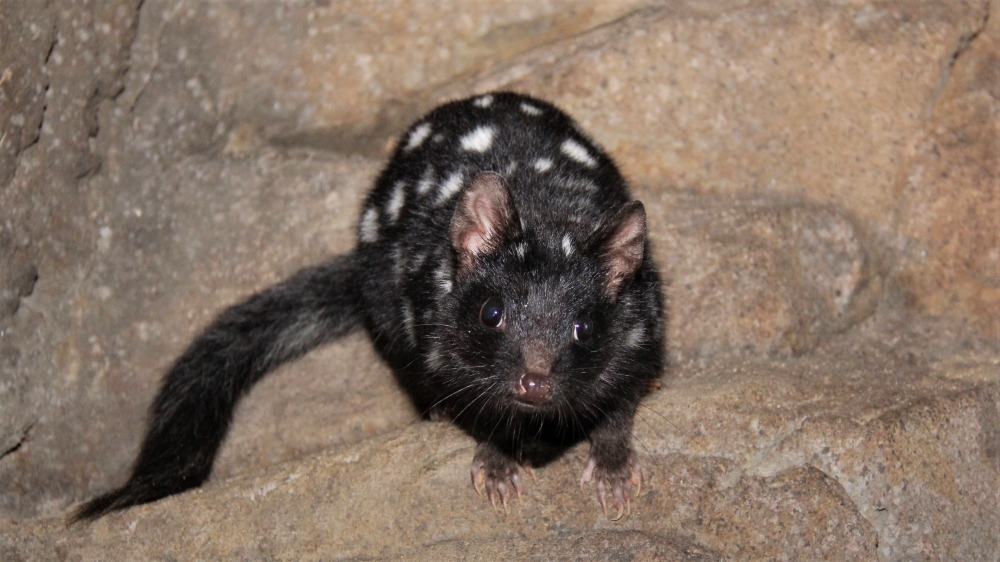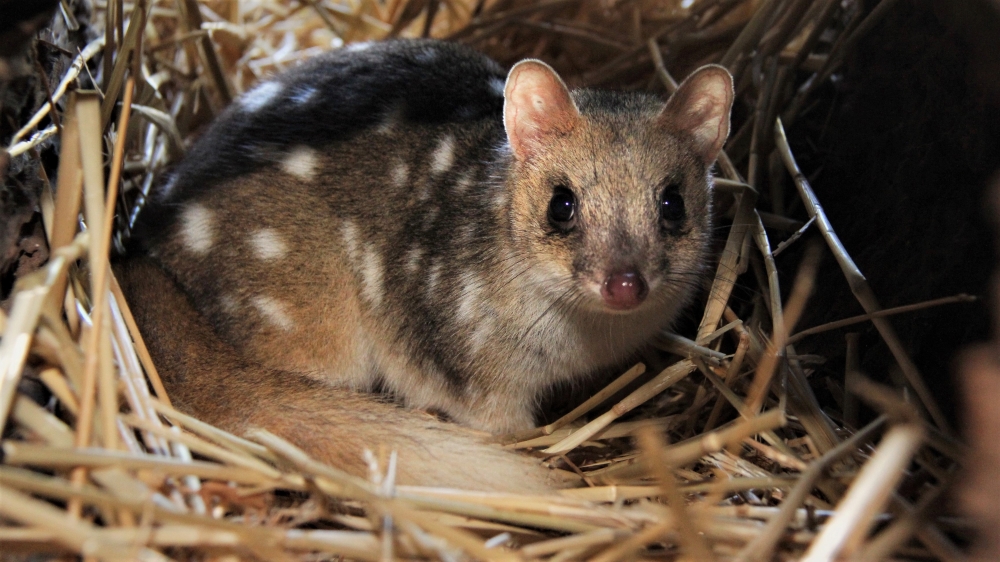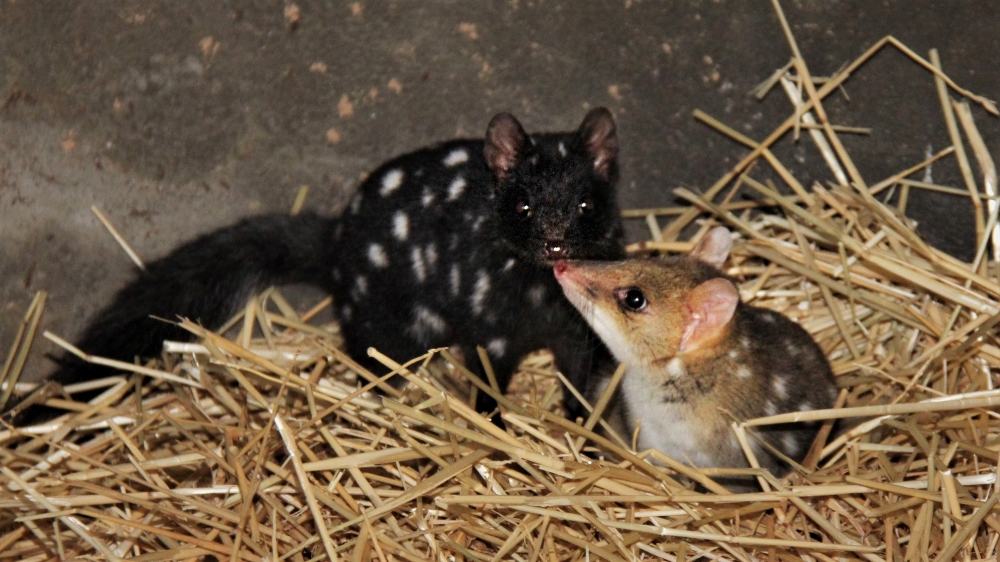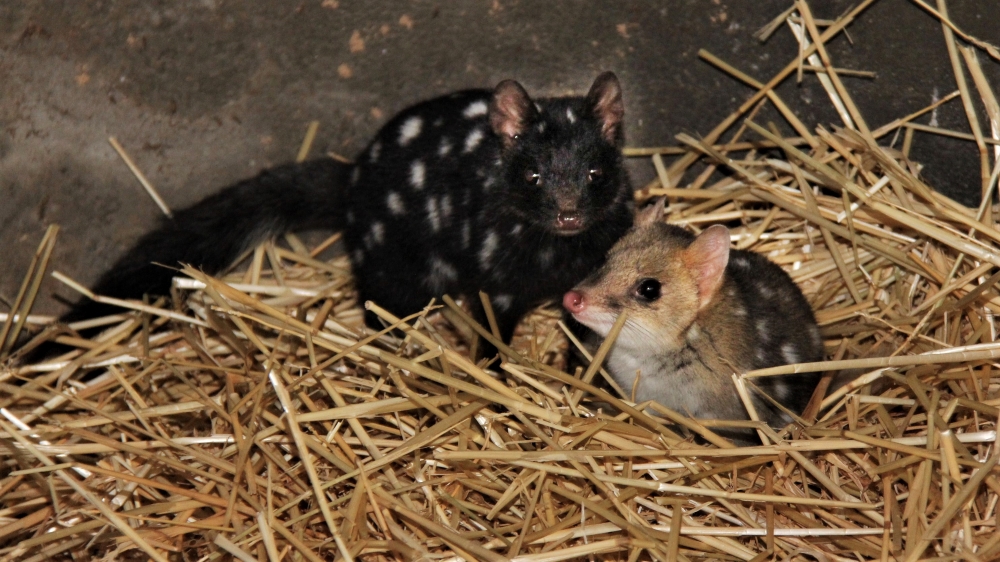If you pause quietly and peer into the Ipswich Nature Centre quoll enclosure you will spot two new animals with an interesting story.
Environment and Sustainability Committee Chairperson Councillor Russell Milligan said the two-and-a-half year old eastern quolls had come a long way to make their permanent home in Ipswich.
“Anouk and Gunni came to us all the way from the Devils @ Cradle conservation and breeding sanctuary in Tasmania,” Cr Milligan said.
“Eastern quolls were once widespread across southeast mainland Australia but since the 1960s they can only be found in Tasmania.
“Conservation programs are slowly re-introducing eastern quolls to the southern mainland, but threats such as cats and foxes are an ongoing problem.
“Having Anouk and Gunni in Ipswich is a boon for the city and will hopefully inspire people to learn about these interesting and endangered native animals.”


Cr Milligan said it was easy to tell them apart – Anouk has black fur, and Gunni is the fawn colour.
“The black fur is rarer than the fawn, so it’s special to have one of each for Ipswich Nature Centre visitors to see up close,” Cr Milligan said.
Cr Milligan said the two new female eastern quolls had settled into their enclosure.
“They have been exploring, climbing on all the furniture and digging up the plants,” Cr Milligan said.
Cr Milligan said the eastern quoll was different to the endangered spotted-tail quoll that can be found in our local region.
Ipswich Nature Centre in Ipswich’s historical Queens Park offers a magical opportunity to get up close and personal with Australian native wildlife.
The centre is home to over 42 species and around 200 animals in care, from dingoes, bilbies and wallabies to water dragons and a whole petting zoo.
Open six days a week, seven during school holidays, and near the Japanese Nerima Gardens within Queens Park, the Ipswich Nature Centre is perfect family-friendly fun.
For more information about the Ipswich Nature Centre, click here.

Eastern quolls are a small carnivorous marsupial, with males weighing about two kilograms and females one kilogram.
They live for three to five years. They are fast and agile nocturnal predators, hunting insects and small mammals.
Females care for six young in their pouch, which are as small as a grain of rice when they are born.
Learn more about the tiny predators here.
Read also:
>>> Little additions to Ipswich Nature Centre are big on cute factor


